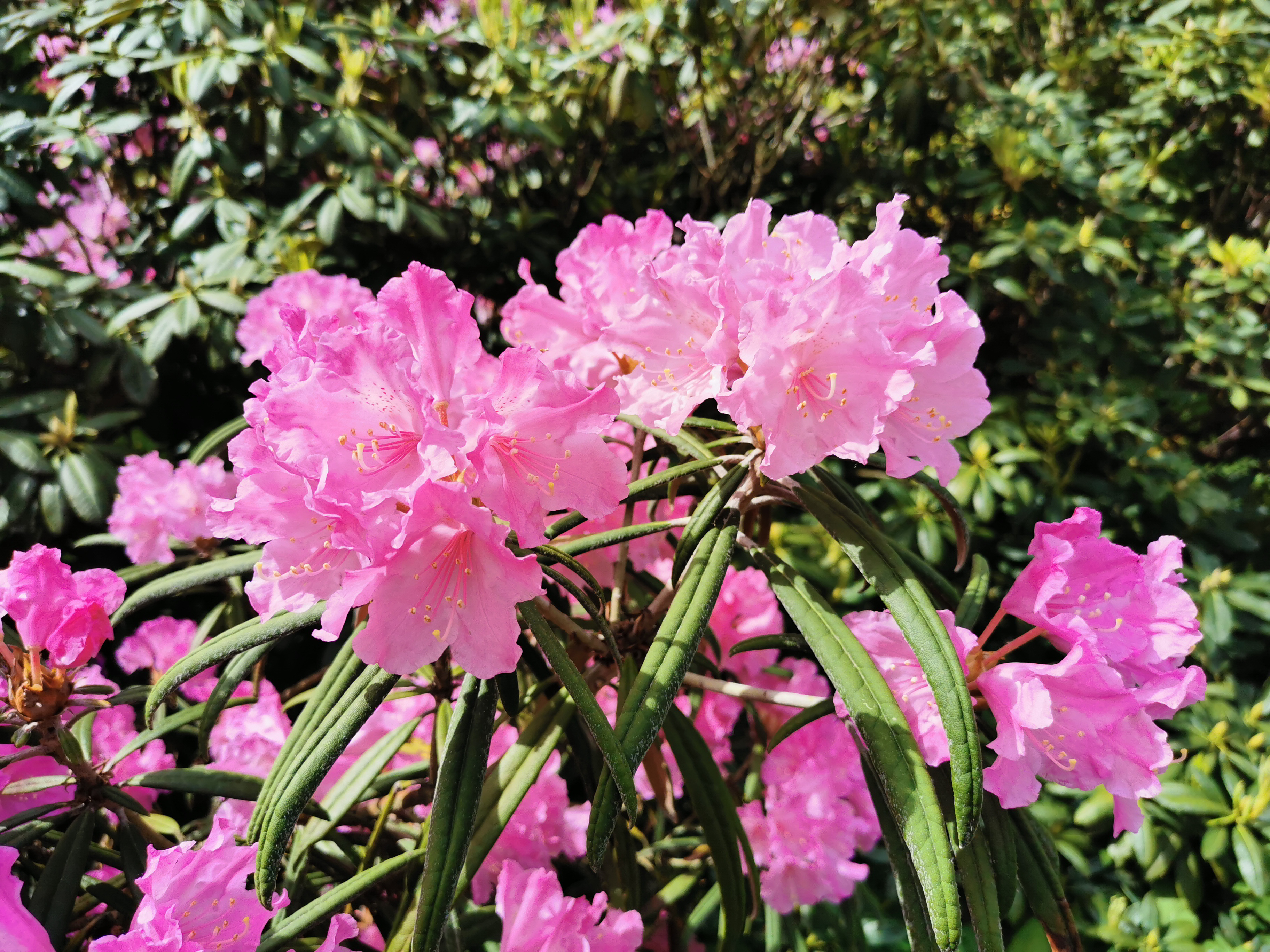Makino rhododendron
(Rhododendron makinoi)

Description
Rhododendron makinoi is a species of flowering plant belonging to the family Ericaceae. It is native to the high mountains of Japan, where it is commonly found growing in subalpine and alpine zones. This beautiful shrub is admired for its showy flowers, attractive foliage, and hardy nature. In this article, we will explore the various aspects of Rhododendron makinoi, including its morphology, habitat, cultivation, and uses. Taxonomy and Nomenclature Rhododendron makinoi was first described by the Japanese botanist Tomitaro Makino in 1911. The genus Rhododendron is a large group of woody plants that includes about 1,000 species and countless cultivars. The name Rhododendron is derived from the Greek words "rhodon" meaning rose and "dendron" meaning tree, reflecting the showy and colorful flowers that these plants produce. The specific epithet "makinoi" honors the plant's discoverer, Tomitaro Makino. Morphology Rhododendron makinoi is a deciduous or evergreen shrub that can grow up to 3 meters tall and wide. Its leaves are elliptic to oblong in shape, 5-15 cm long, and 2-5 cm wide. The upper surface of the leaves is dark green, while the lower surface is pale green with a few hairs. The leaves are arranged alternately on the stem and have a prominent midrib and veins. The flowers of Rhododendron makinoi are bell-shaped, 2-3 cm long, and are usually produced in clusters of 3-10 at the ends of the branches. The flowers come in a range of colors, including pink, purple, red, and white, and have spots or blotches on the inside of the corolla. The stamens are shorter than the corolla and are usually white or yellow. Habitat and Distribution Rhododendron makinoi is native to the high mountains of Japan, where it is found growing in subalpine and alpine zones. It prefers moist, well-drained soil that is rich in organic matter and slightly acidic. In its natural habitat, Rhododendron makinoi is often found growing in rock crevices or on steep slopes, where it is exposed to full sun or partial shade. Cultivation Rhododendron makinoi is a hardy plant that can be cultivated in a wide range of climates. It is usually propagated by seed or cuttings and can be grown in containers or in the ground. Here are some tips for cultivating Rhododendron makinoi: Soil: Rhododendron makinoi prefers well-draining, acidic soil that is rich in organic matter. A soil pH between 4.5-5.5 is ideal. If your soil is not naturally acidic, you can add sulfur or other acidifying agents to adjust the pH. Location: Rhododendron makinoi should be planted in a location that receives partial shade or filtered sunlight. Direct sunlight can cause leaf scorch, so it is important to protect the plant from intense sunlight. The plant prefers a cool, temperate climate with moderate rainfall, but can tolerate some drought and heat once established. Watering: Regular watering is important to keep the soil moist but not waterlogged. Overwatering can cause root rot, so it is important to ensure that the soil is well-draining. Fertilizer: Rhododendron makinoi benefits from regular fertilization with a slow-release, acidic fertilizer. Fertilizer should be applied in early spring before new growth begins. Pruning: Pruning can help to shape the plant and encourage healthy growth. Pruning should be done in early spring before new growth begins. Pest and disease control: Rhododendron makinoi is susceptible to a number of pests and diseases, including root rot, leaf spot, and aphids. Regular inspection and treatment can help to prevent these issues. Fungicides and insecticides can be used as needed. By following these cultivation tips, you can help to ensure that your Rhododendron makinoi grows healthy and beautiful. Uses Rhododendron makinoi has a few uses, including: Ornamental: Rhododendron makinoi is primarily grown as an ornamental plant for its attractive flowers and foliage. It is often used in gardens, parks, and other landscaping projects to add color and texture to the landscape. The plant can also be used as a hedge or screen, as it has a dense growth habit and responds well to pruning. Traditional medicine: Rhododendron makinoi has been used in traditional medicine to treat a variety of ailments. The plant contains compounds that have anti-inflammatory and antioxidant properties and has been used to treat conditions such as arthritis, asthma, and digestive disorders. However, it is important to note that some species of Rhododendron contain toxic compounds, and should not be ingested without proper preparation or guidance from a healthcare professional. Overall, Rhododendron makinoi is primarily valued for its ornamental value, but also has some traditional medicinal uses. As with any plant, it is important to handle it with care and seek expert guidance before using it for any medicinal purposes. Conservation Rhododendron makinoi is not currently considered endangered, but its natural habitat is under threat from habitat destruction and climate change. As with many plant species, conservation efforts are focused on preserving the plant's habitat and preventing the loss of biodiversity in the region. Conclusion Rhododendron makinoi is a beautiful and hardy plant that is valued for its ornamental value and traditional medicinal uses. With proper cultivation and care, this plant can thrive in a variety of settings and bring color and texture to any landscape. As we continue to learn more about the importance of biodiversity and conservation, it is important to appreciate and protect the unique species like Rhododendron makinoi that make up our natural world.
Taxonomic tree:







